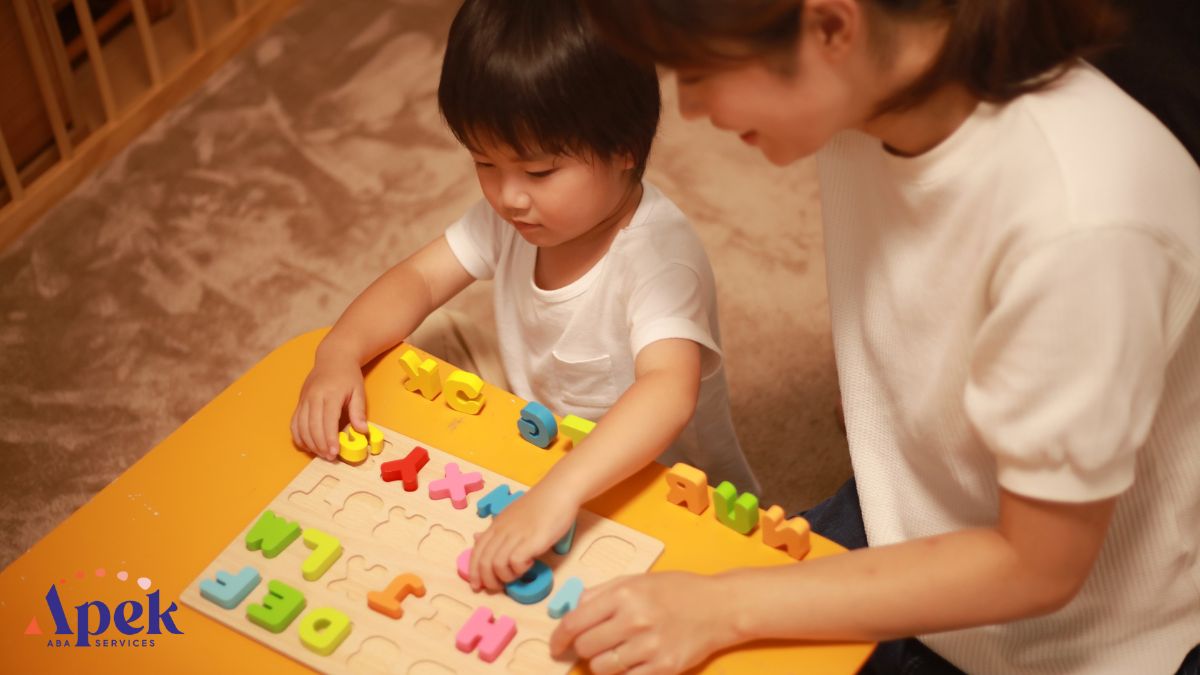Key Points:
- ABA is right for your child if it matches their learning style, fits your family’s capacity, and targets real-life goals like communication, safety, and independence.
- Look for personalized teaching, consistent parent coaching, and progress within 4–6 weeks.
- Adjust or pause if stress rises or gains don’t appear.
Daily routines feel heavy when communication, behavior, or self-care tasks keep breaking down. Applied Behavior Analysis (ABA) offers a structured way to teach skills and reduce stress. Parents who ask, “Is ABA right for my child?” want clear steps, realistic expectations, and a plan that respects their child’s pace and preferences.
The guide below shows how ABA decisions work in real life, from techniques and hours to funding and red flags, so you can choose next steps that actually help at home and in the community.

Is ABA Right for My Child? Decision Factors That Count
Choosing ABA starts with clarity about goals and fit. Short, simple steps help families plan effectively.
Start with clear goals
- Write two or three priorities that will improve daily life.
- Focus on communication, toileting, play, safety, or routines like daily living skills.
- Use plain language so any provider can target them.
Check learning fit
- Some children learn best through short, structured sessions.
- Others respond to play, movement, or natural routines.
- Ask how each provider teaches one skill in multiple ways.
Match hours to need
- More hours help only when sessions are high quality.
- Ask for weekly parent coaching to extend gains at home.
- Expect measurable goals, a review schedule, and data updates.
Balance family capacity
- ABA adds appointments, home practice, and reports.
- If time is limited, request a focused plan with two main skills first.
Look for quality and respect
- Therapists should model sessions, share data, and adjust as needed.
- Breaks, preferred activities, and choice signals show respect and reduce stress.
Quick checks before you start:
- Clear goals: A few daily-life targets with baseline data and how success will be measured.
- Teaching match: Options for both structured and play-based learning, not one method only.
- Parent role: Scheduled coaching, not occasional tips.
- Assent and dignity: Child choice, breaks, and least-intrusive prompts.
- Review rhythm: Data reviews every 4–6 weeks with changes when progress slows.
Weaving the main question, “Is ABA right for my child?” through these tests keeps the decision practical and personal.

What Are ABA Techniques? Core Methods Parents Will See
Families often hear terms without examples. Ground each one in a daily task so the approach makes sense and your child stays engaged.
- Discrete Trial Training (DTT)
Short practice trials build a new skill step by step. A child practices “point to cup,” gets feedback, and repeats with small changes. DTT helps when a skill needs clear steps and tight structure.
- Natural Environment Teaching (NET)
Skills are taught during play and routines. Asking for “juice” happens at snack time, not at a desk. NET helps with carryover because learning sits inside real moments.
- Pivotal Response Treatment (PRT)
Focus sits on “pivotal” areas like motivation and initiation. The child picks the activity; the therapist prompts and reinforces attempts. PRT helps kids who shut down when drills feel repetitive. (Parents searching for “What are ABA techniques?” will usually land here.)
The team identifies what a behavior “gets” for the child (help, break, item) and teaches a simple replacement, like “help please” or tapping a card. FCT reduces frustration and gives your child a fast, clear way to ask.
- Task Analysis and Chaining
Complex tasks (handwashing, dressing) are broken into steps. Teaching proceeds forward or backward along the chain until the whole routine is independent.
- Prompting and Fading
Prompts (gestures, visuals, models) guide success early. Prompts fade as independence grows. Good fading prevents prompt dependence.
- Reinforcement
Rewards match the child’s interests, like social praise, tokens, and activities. Strong programs pair reinforcement with choice and skill building, not compliance for its own sake.
When techniques click, your child participates more and behaviors tied to frustration ease. The mix of DTT, NET, PRT, and FCT should flex as goals change across home, school, and community.

Pros and Cons of ABA Therapy for Autism
Parents expect honest trade-offs. Gains should outweigh costs in time, energy, and money. Evidence shows benefits for key outcomes, but results vary by child, quality, and family follow-through.
What helps:
- Early and focused teaching speeds up communication, daily living skills, and play.
- Parent coaching supports carryover across settings, and families can support ABA therapy from home through short, consistent routines
- Data tracking shows what works faster, so time is not wasted on stale tactics.
What to watch:
- Intensity without flexibility can cause fatigue or refusal.
- Poorly set goals may target compliance over meaningful skills.
- Progress can stall if parent training is light or if strategies never change.
A recent review of parent-implemented programs reported a moderate average effect (g ≈ 0.60) on social-communication outcomes, suggesting real but variable gains when caregivers are trained and supported. Use this number as context, not a promise. The provider’s coaching plan and your home routines shape how much of that effect you will see.
How to tip the balance:
- Pick 2–3 daily-life goals that reduce stress right away (asking for help, following a morning routine, staying with the group in public).
- Ask for teaching in multiple contexts to prevent fragile skills.
- Review data monthly and pivot if growth flattens.
How to Get ABA Therapy for My Child: Practical Steps and Guide
Getting started follows a predictable path. Knowing the steps reduces delays and surprises.
1. Screening and diagnosis. Pediatricians screen at 18 and 24 months and any time concerns arise. If screening flags risk, ask for a referral to a clinician qualified to diagnose autism and to begin early supports while you wait.
2. Referral and intake. After diagnosis, request ABA provider lists from your insurer and local pediatric networks. When you call, ask for an intake that includes a home visit or live observation. Families searching for “How to get ABA therapy for my child?” can also ask their pediatrician to send the referral directly to a provider to speed scheduling.
3. Funding basics. Insurance coverage depends on your plan and state rules. A peer-reviewed analysis notes all 50 U.S. states have enacted insurance mandates for autism-related services, though the scope of benefits varies by state and plan. Ask your plan about deductibles, visit limits, prior authorization, and whether parent training is covered.
4. Assessment and plan. A Board Certified Behavior Analyst (BCBA) conducts assessments, sets baselines, and writes goals with you. Expect a service mix that includes direct therapy and caregiver training. Hours should align with need, not an automatic number.
5. Launch and review. The team should model sessions, coach you in real routines, and send simple home practice. Short daily practice (5–10 minutes across routines) often beats long weekend marathons. Set a 4–6 week review to check data and adjust.
6. School and community links. Ask the provider to coordinate with teachers and related services; a team that collaborates with parents and teachers keeps goals and language consistent across settings. Share visuals and scripts so your child hears and sees the same cues in each place.
7. Access tips to reduce wait time:
- Request to start with a focused plan while you wait for full hours.
- Ask for telehealth parent coaching if home visits are delayed.
- Join a cancellation list and confirm weekly.

Is ABA for Autism Only?
ABA principles apply across many diagnoses and settings. Most programs focus on children with autism because insurance and provider training are centered there. Many health plans classify ABA as part of behavioral health treatment for autism, though some states, like Washington, also include developmental disabilities when medically needed.
Parents often ask, “Is ABA for autism only?” The answer is no. Insurance rules may require an autism diagnosis for coverage, but that affects funding, not the science. Schools also use ABA-based methods to improve attention, learning, and independence, so home–school coordination helps skills stick.
If your child doesn’t have an autism diagnosis but shows developmental or behavior challenges, you can still request behavioral support through early intervention or school.
Focus goals on the following:
- Communication
- Daily living
- Safety
- Participation
If private ABA isn’t covered, ask about similar options like parent coaching, speech therapy with naturalistic methods, or occupational therapy using visual supports.
Is ABA Right for My Child: Signs It Helps vs When to Pause
Parents need a simple way to judge fit in the first few weeks. Use direct signs that tie back to your goals.
Early green flags:
- Your child approaches the therapist, shows more attempts, and tolerates short practices.
- New skills appear in real moments: asking for help, waiting, or joining play.
- Data shows progress on at least one high-priority skill every two weeks.
Early yellow flags:
- Sessions feel tense and your child avoids them.
- Goals focus on compliance rather than communication or independence.
- Strategies look the same across weeks even when data is flat.
When to pause or pivot:
- Replace long drills with play-based teaching if motivation drops.
- Swap token rewards for natural rewards tied to the task.
- Tighten the parent-coaching plan if home carryover is weak.
If medical or sensory issues block progress, coordinate with your pediatrician and therapists to address them first.
A final context point: more children are being identified with autism, which affects demand for services. Recent CDC surveillance estimates about 1 in 31 8-year-old children were identified with autism in 2022 across participating sites.
This trend increases waitlists, so early referrals and interim parent coaching can protect momentum while full services ramp up. Families who want practical indicators can review signs of autism in older children.

Frequently Asked Questions
Does my child really need an ABA?
Yes, your child may need ABA if daily routines break down, communication is limited, or safety is at risk. A trial plan with clear goals and weekly caregiver coaching can show if targeted teaching improves function within 4–6 weeks. Reassess if distress rises or progress is limited.
How do I know if ABA therapy is right for my child?
Know if ABA therapy is right for your child by checking if the plan fits your child’s learning style, your family’s routines, and real-life goals. Look for teaching in natural settings, consistent parent coaching, and flexible methods. Track progress for a month and adjust if stress stays high or skills don’t show.
What is the best age for ABA therapy?
The best age for ABA therapy is as early as possible, often before age 5, when brain development and learning are rapid. Support should begin when delays affect daily life. ABA remains helpful at any age if goals target communication, independence, and participation with consistent practice.
Take the Next Step Toward Skill-Building at Home
Parents who ask, “Is ABA right for my child?” want steady gains they can see at home, at school, and in the community. ABA therapy services in Georgia and Virginia connect families to assessment, coaching, and practical teaching that targets communication, independence, and safer routines.
At Apek ABA, sessions center on meaningful goals, weekly caregiver training, and respectful strategies that honor your child’s voice. If you are ready to set up an assessment or have questions about hours, insurance, or waitlists, reach out to us. A short conversation can map the first steps and reduce stress across your week.

